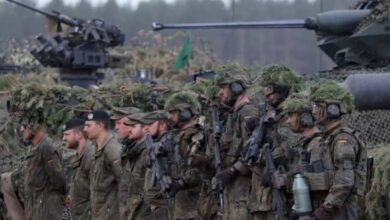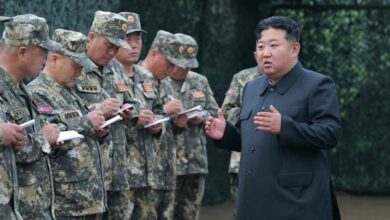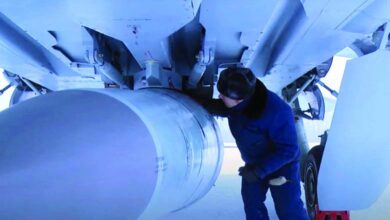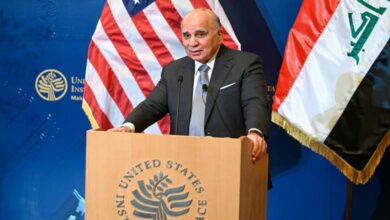Wars Without Soldiers… Spider Web Unveils the Future of Military Conflict

A race for technological armament is reshaping the landscape of warfare, where drones and artificial intelligence emerge as decisive elements in the equations of deterrence and conflict.
-
Quantity and Precision: Missile Superiority Gives Russia the Edge Over Ukraine
-
The Silent Hunter… Could it Shift the Balance in the Ukraine War?
In this context, the Ukrainian “Spider Web” operation deep inside Russian territory highlights the growing role of drones in changing the rules of engagement, raising profound questions about the balance of power, the future of deterrence, and the potential return of the “total war” concept.
Military expert Mara Karlin, a professor at Johns Hopkins University and former advisor to six U.S. defense secretaries, stated in an interview with Foreign Policy that, despite its precision and media impact, the operation had limited strategic effect due to unclear Russian losses—ranging from the destruction of 40 bombers (according to Ukraine) to just a few (according to Russia).
However, she stressed the importance of the element of surprise and the long-term planning that preceded the operation.
-
The West and Peace in Ukraine: Conditions to Bridge the Gap Between Ground Realities and Negotiations
-
War Consumes the Reserves: Ukraine Lures Gen Z with Cash and Perks
Karlin compared “Spider Web” to a previous Israeli strike against Hezbollah in Lebanon last fall, which reportedly wounded at least 2,000 fighters. Despite the similarity in innovation, she argued the Israeli strike had a greater impact.
She noted that, in the short term, technology may tip the scales in favor of weaker players, but in the long run, it benefits those who effectively integrate it and build strong organizational capabilities around it.
Karlin emphasized that drones have become a central feature not only in Ukraine but also in other conflicts—such as last year’s escalation between Israel and Iran, and the recent tensions between India and Pakistan.
-
Russia and Ukraine Between Fire and Negotiation: Missiles in the Sky and Exchanges on the Ground
-
The Soviet Monster S-200: Ukraine Reawakens Ghosts of the Past to Haunt Russia
Nuclear Weapons
On the subject of nuclear weapons, Karlin pointed out that discussion has intensified in Europe and the Indo-Pacific, with growing calls for countries like South Korea, Japan, Germany, Poland, and even political circles in Sweden to acquire “latent nuclear capabilities.” This trend raises doubts about the credibility of extended U.S. deterrence, as allies increasingly question its effectiveness.
Artificial Intelligence
Regarding artificial intelligence, Karlin noted its ability to accelerate the pace of wars and improve battlefield data analysis.
-
From 2022 to 2025… Key Diplomatic Milestones to Stop the War in Ukraine
-
Ukraine War: Kyiv Hints at Concessions in a Plan Full of Obstacles
However, she warned about the risk of rushed decision-making due to time pressure induced by AI—comparing it to a hyper-speed chess match between two computers. “I’m a bit concerned about AI accelerating decision cycles too much. You might see people not thinking clearly and feeling pressured to respond. That could pose a major risk to conflict stability.”
She believes AI can assist smaller states through strategic alliances, but that dominant nations investing heavily in advanced computing will retain the advantage.
She also emphasized the need to understand warfare within broader civil and technological contexts—similar to the industrial, agricultural, and democratic revolutions of the past.
-
Land for Temporary Peace: Will Ukraine Be Forced into a Painful Solution?
-
Ukraine Settlement: Trump’s Plan Clashes with Kyiv’s Stubbornness and Moscow’s Missiles
Total War?
On the idea of “total war,” Karlin expressed concern about its potential return, especially in the wake of the war in Ukraine and rising tensions in the Middle East. She argued that it is now essential to prepare for both conventional and nuclear wars, rather than focusing solely on counterterrorism.
As for the United States, she believes it is not fully prepared—especially due to the declining role of civilian expertise in the Department of Defense, which weakens strategic planning.
She also questioned the viability of the currently promoted “Golden Dome” project, citing its exorbitant cost and its departure from America’s traditional preemptive deterrence philosophy.
-
An American Historical Solution for the Ukraine Crisis: The Post-War Berlin Model
-
Military Spending Challenges and Support for Ukraine: Europe between Ambition and Division
China
Finally, Karlin warned of China’s rapid military progress in areas such as nuclear modernization, naval and space capabilities, and cyber operations.
She expressed concern over the lack of military dialogue between Washington and Beijing, which increases the risk of miscalculation—especially amid tensions over Taiwan, which China aims to have the military capacity to control by 2027.












